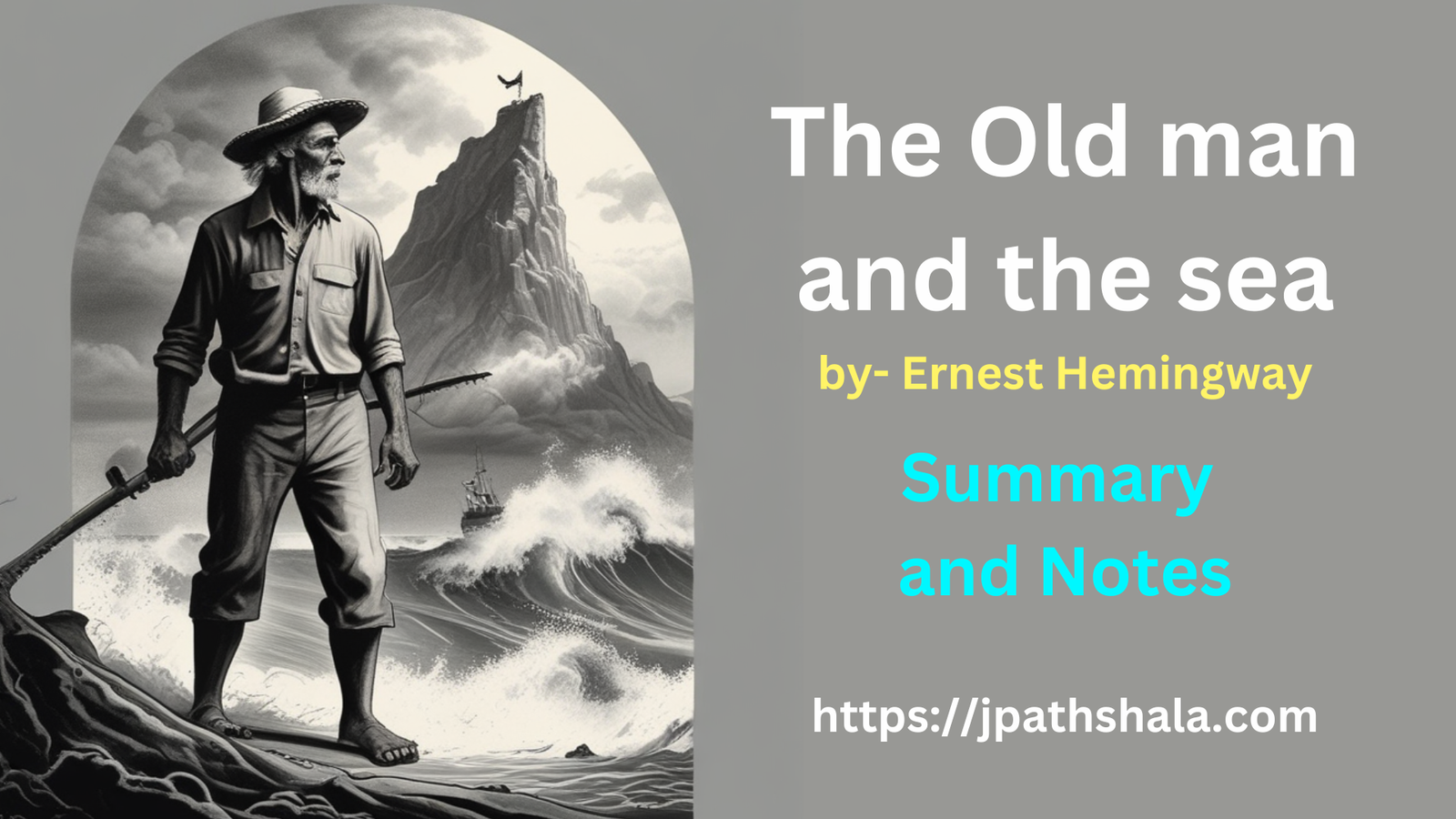The Old Man and the Sea written by Ernest Hemingway Notes and Summary for the BA English Semester 3 of BBMKU and VBU University. JPathshala especially provides notes of BBMKU University Dhanbad.
The Old Man and the Sea summary
For 84 days, the old fisherman Santiago has caught no fish. Santiago is now considered unlucky, alone, impoverished, and facing his mortality. So Manolin (A young boy and Santiago’s fishing partner) has been denied by his parents to fish in another, more productive boat. Every evening, though, when Santiago similarly returns empty-handed, Manolin helps carry home the older man’s equipment, keeps him company, and brings him meals.
On the 85th day, in the morning, Santiago sailed before dawn on a three-day odyssey that took him very far out to sea. In search of a fish, he finally does snag a marlin of epic proportions, enduring incredible difficulty to land the great fish. He straps the marlin along the length of his boat and heads for home, hardly believing his victory. Within an hour, A mako shark attacks the marlin, taking away a large chunk of its flesh and disfiguring Santiago’s prize. Santiago endures great suffering and finally defeats the mako with his harpoon.
The torn flesh of the marlin releases the fish’s bloodstream and smells into the water, drawing packs of shovel-nosed Sharks. Santiago fights the scavengers with whatever equipment he has. He strives tiredness, great pain, and even tears something in his chest. The sharks finally took the marlin’s flesh and left the skull. Santiago, defeated, reaches the shore and beaches the skiff. He is alone in the darkness and looks at the marlin’s skull in the streetlight reflection. Then he struggles back to his shack and falls on his cot in exhaustion.
The following day Manolin finds Santiago in his hut and cries over the older man’s injuries. Manolin brings coffee and listens to the other fisherman what he had already glimpsed — that the marlin’s skeleton tied to the boat is eighteen feet long, the most incredible fish the village has known. Manolin sits with Santiago until he awakes, giving the older man some coffee. The older man tells Manolin that he was defeated. But Manolin comforts him by telling lines:
- that the great fish didn’t beat him,
- that they will fish together again,
- that luck doesn’t matter,
- and that the older man still can teach him many things.
That afternoon, some tourists see the marlin’s skeleton waiting to go out with the tide and ask a server what it is. Trying to clarify what happened to the marlin, the waiter replies, “Eshark.” But the tourists misconstrue and guess that’s what the skeleton is.
Back in his hut, with Manolin sitting beside him, Santiago dozes again and dreams of the young lions he had seen along the coast of Africa when he was a young man.
Read More
- Death of a Salesman Summary Semester 3
- Earnest Hemingway: Life and Works
- Break Break Break by Alfred Tennyson
FAQs: The Old Man and the Sea
What is “The Old Man and the Sea” about?
“The Old Man and the Sea” is a novella by Ernest Hemingway, that tells the story of Santiago, an ageing Cuban fisherman who struggles to catch a fish after 84 days of bad luck. When he finally hooks a massive marlin, the novella explores his epic battle against the fish and the elements.
What are some themes explored in “The Old Man and the Sea”?
Themes in the novella include resilience, determination, the struggle against nature, the human condition, and the meaning of success and failure.
How was “The Old Man and the Sea” received by critics and readers?
The novella received critical acclaim upon its publication and won the Pulitzer Prize for Fiction in 1953. It is considered one of Hemingway’s greatest works and has been praised for its profound themes, vivid imagery, and powerful storytelling.
What is the significance of “The Old Man and the Sea” in literature?
“The Old Man and the Sea” is regarded as a classic of American literature and is studied in schools and universities around the world. It is celebrated for its exploration of timeless themes and its masterful use of language and symbolism.
How does “The Old Man and the Sea” reflect Hemingway’s writing style?
The novella features Hemingway’s characteristic sparse prose, vivid descriptions, and focus on themes of courage, endurance, and the human condition. It exemplifies his “iceberg theory” of writing, where much of the story’s depth lies beneath the surface.
Also Read
Join My YouTube channel: JPathshala_English
